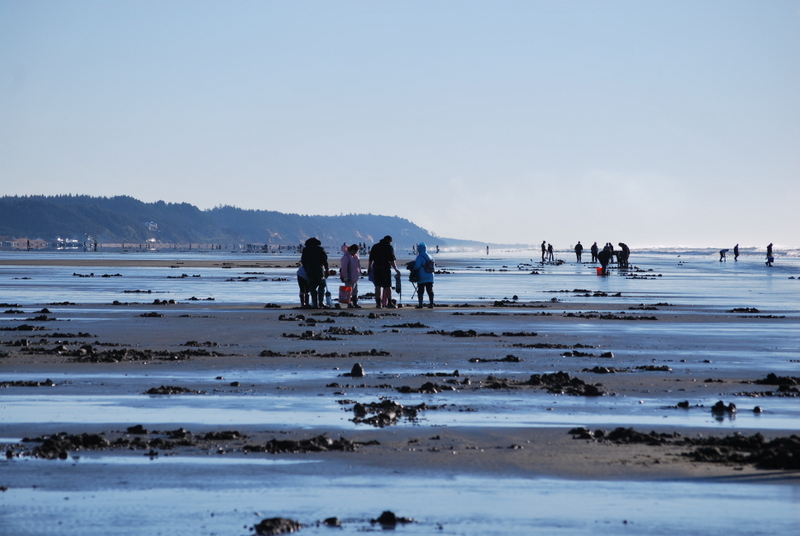Submitted by Washington Department of Fish and Wildlife
A razor clam dig in early November will go ahead as planned at Long Beach and Twin Harbors, but the status of two other ocean beaches tentatively scheduled to open depends on results from additional toxin testing.
The Washington Department of Fish and Wildlife (WDFW) has approved the November 3-5 dig on evening tides at Long Beach and Twin Harbors after marine toxin tests showed that clams on those beaches are safe to eat. No digging will be allowed before noon.
Dan Ayres, WDFW coastal shellfish manager, said that test results at Mocrocks and Copalis meet state health standards, but the Washington Department of Health has asked for one more test to be sure. WDFW expects to announce the results of the testing early next week.
Tentative dig dates for Mocrocks and Copalis can be found on WDFW’s website.
Ayres reminds people that they have a daily harvest limit of 15 razor clams and must keep the first 15 clams they dig. Each digger’s clams must be kept in a separate container.
The upcoming dig is approved on the following beaches, dates and evening low tides:
- November 3, Friday, 6:47 p.m.; -0.7 feet; Long Beach, Twin Harbors
- November 4, Saturday, 7:31 p.m.; -1.2 feet; Long Beach, Twin Harbors
- November 5, Sunday, 7:16 p.m.; -1.4 feet; Long Beach, Twin Harbors
All diggers age 15 or older must have an applicable 2017-18 fishing license to harvest razor clams on any beach. Licenses, ranging from a three-day razor clam license to an annual combination fishing license, are available on WDFW’s website and from license vendors around the state.
WDFW has tentatively scheduled another dig for December 1-4, pending results of future toxin tests.





















































